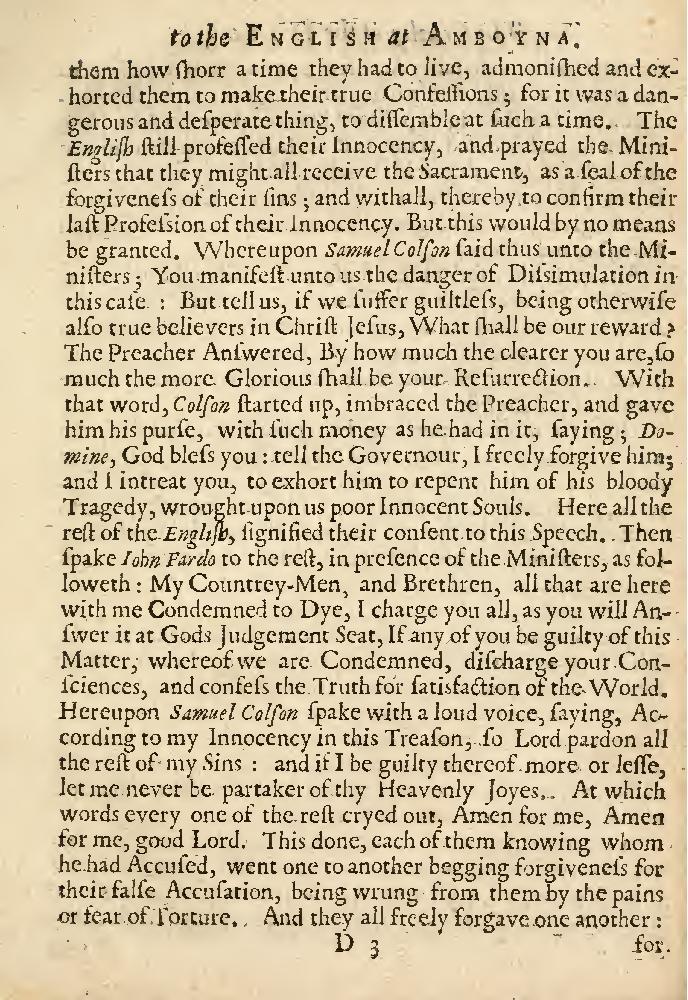A true relation of the uniust, cruell, and barbarous proceedings against the English
Analysis
This is an excerpt from a pamphlet produced on the English side in 1624. The purpose of this pamphlet was to damn the Dutch as brutal murders who had deliberately fabricated a conspiracy as a pretext to eject the English from the spice islands. Its author, John Skinner, collected the most explosive testimony presented by the Amboyna survivors and then proceeded to exaggerate it for effect. This scene is a good example and it seems have been largely invented. In it, the English are presented as virtuous, godly victims in sharp contrast with the villainous Dutch. Not only do the English merchants at Amboyna go to their deaths with a pure conscience, but they in fact forgive the Dutch for their terrible crimes against them. Scenes like this fanned the flames of anti-Dutch sentiment in England in this period.

The English still professed their innocency, and prayed the ministers that they might all receive the sacrament, as a zeal of the forgiveness of their sins, and withal thereby to confirm their last profession of their innocency. But this would by no means be granted, whereupon Samuel Colson said thus unto the ministers: You manifest unto us the danger of dissimulation in this case; but tell us if we suffer guiltless being also otherwise true believers in Christ Jesus, what shall be our reward? The preacher answered, by how much the clearer you are, so much the more glorious shall be your resurrection. With that word Colson started up embraced the preacher, and gave him his purse with such money as he had in it, saying, Domine, God bless you. Tell the Governor I freely forgive him; and I entreat you to exhort him to repent him of this bloody tragedy wrought upon us poor innocent souls. Here all the rest of the English signified their consent of this speech.

